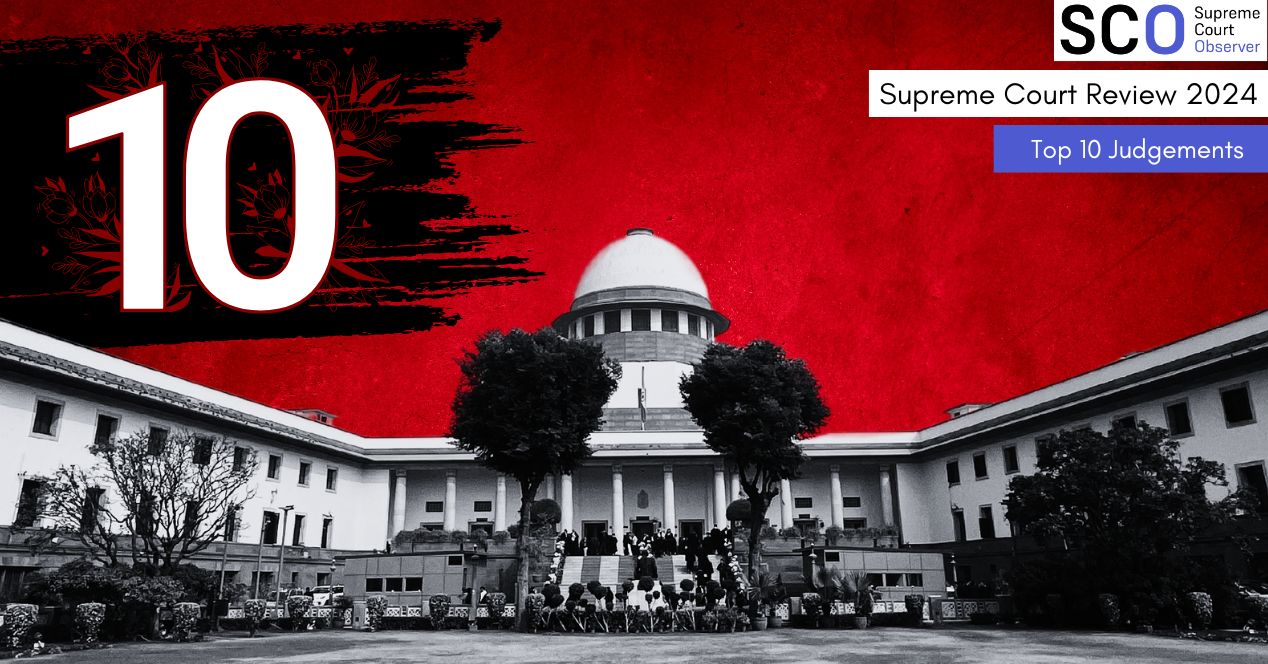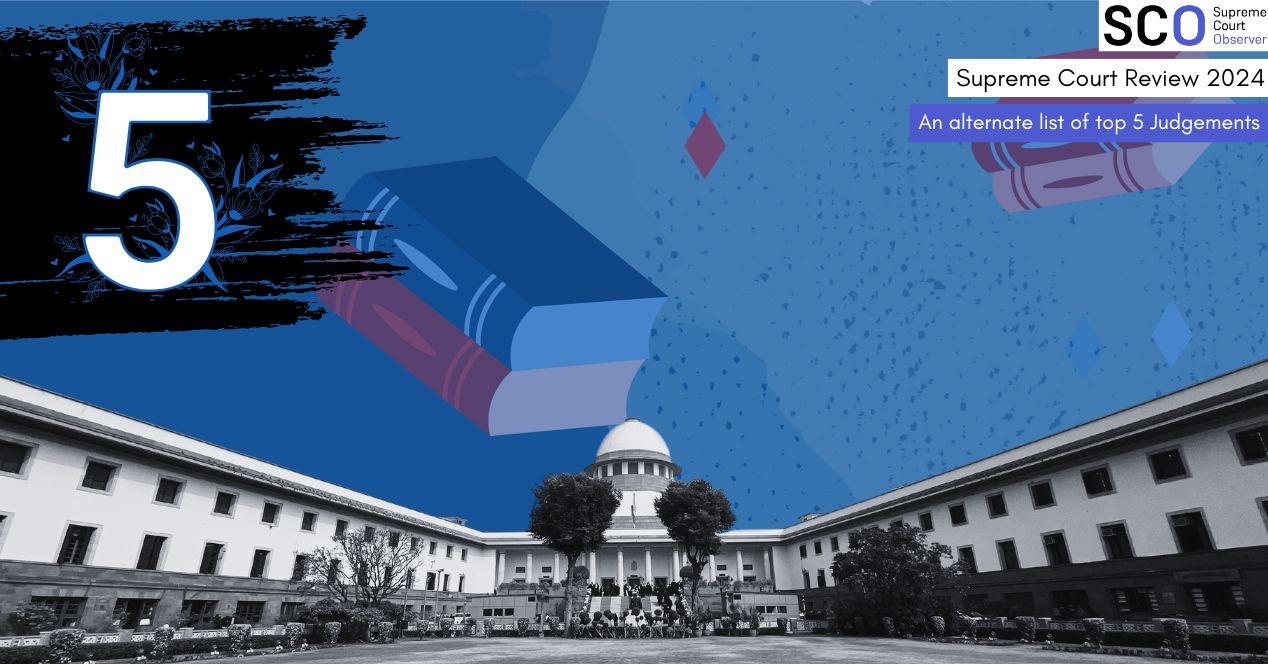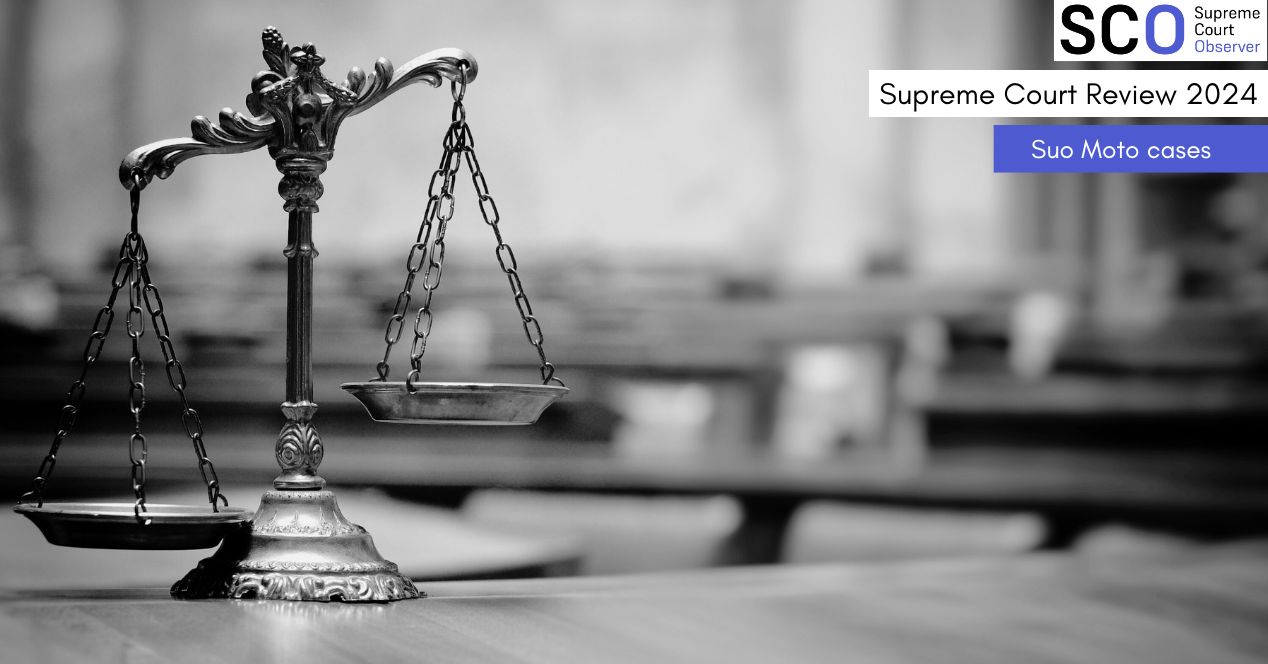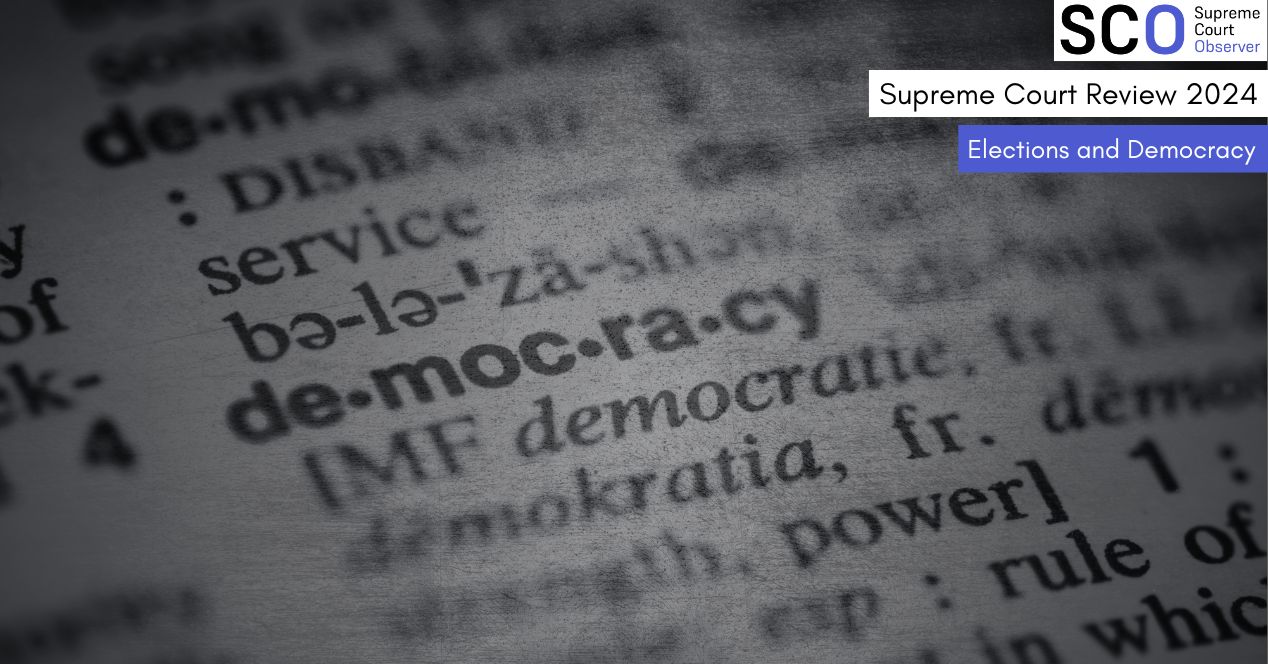Analysis
2024: Supreme Court Wrapped
Our year-ender series captures key moments of an action-packed year for the Court. There’s also a lot lined up for 2025
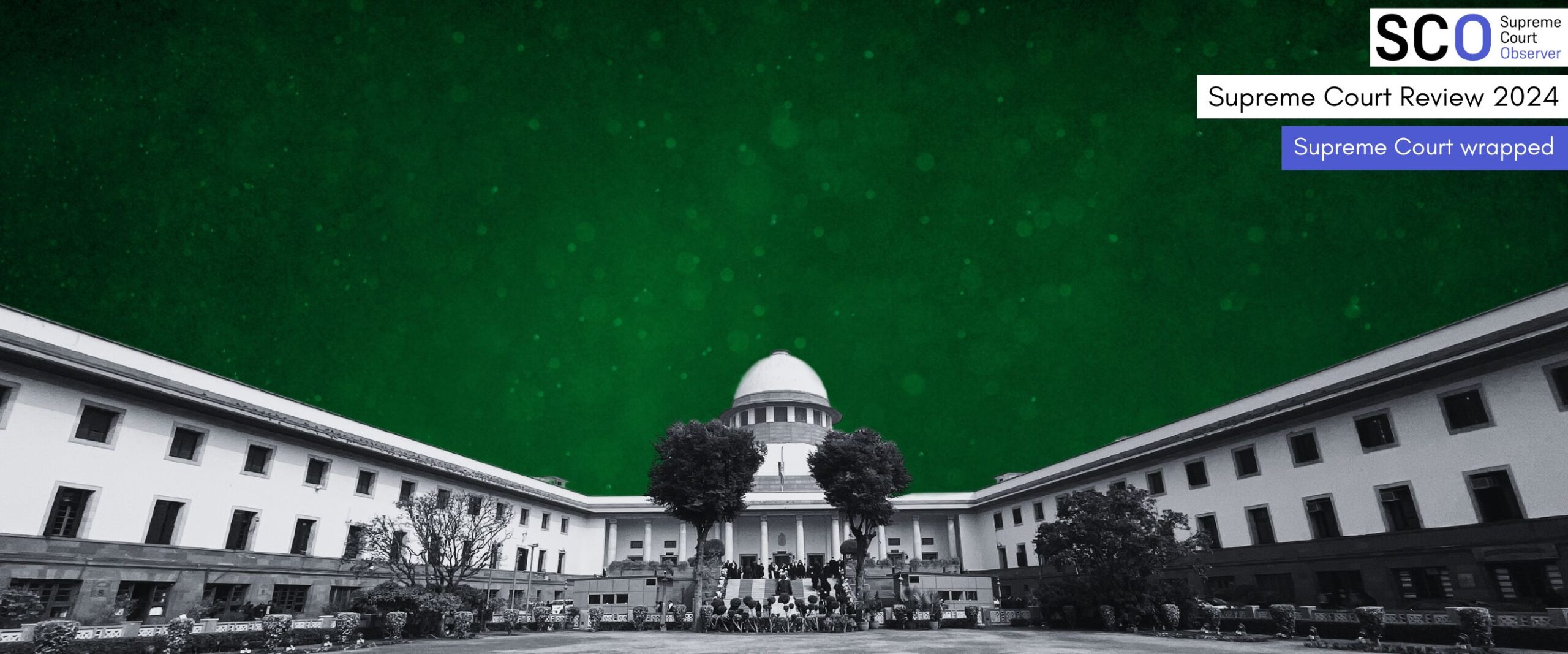
It’s that time of the year again, when we wax nostalgic for the year past and see how far we’ve come. For the Supreme Court, 2024 was action-packed and full of excitement, not least because it was a year that saw a General Election and the retirement of one of the most high-profile Chief Justices of our times. The Court bustled with Constitution Bench activity, took up the most number of suo moto cases in two decades and handed out judgements impacting important constituencies like taxpayers, voters and minorities.
We at the Supreme Court Observer watched these activities closely and documented the work of the Court in the living archive, analysis and data sections of our website. Over the last week, we’ve also put together several articles as part of our much-awaited annual review series.
The flagship publication is a review of the year’s top 10 judgements. This list includes the string of bail orders for Opposition leaders which seemed to turn the tide around how the Prevention of Money Laundering Act’s strict bail provisions are interpreted. The list also includes one of the most important reservation-related judgements of our time—the upholding of states’ power to create sub-classification within SC/ST categories. Another case in our list marks India’s ascension to a small group of countries that explicitly criminalise even possession of ‘child pornography’.
Our team also contributed a case each to an ‘alternative list’—these didn’t make the top 10 but they could potentially move the needle on important aspects of lives and livelihood in India.
We’ve also published a series of thematic reviews. The one on child rights highlights judgements that offered much-needed clarity on aspects of the Juvenile Justice and Protection of Children from Sexual Offences Acts. The top court also defended the rights of children from minority groups, upholding their right to education in minority institutions and acknowledging that discrimination against them is a pressing problem.
Our review of the Court’s interventions in election season looks at five decisions, including the challenge to the Electoral Bonds Scheme, where the Court took a stance on issues concerning free and fair elections and voters’ right to information.
The selection of judgements on religion and culture highlighted the Court’s inclusive approach in a year where incidents of communal polarisation were regular features. In one case, the Court stayed a circular of a Mumbai college that banned hijabs. In another, it undertook a broad interpretation while laying down indicia to identify minority institutions. One judgement even reaffirmed the inclusion of the word ‘secular’ in the Constitution’s Preamble.
Our overview on centre-state cases highlights a trend of the Court batting in favour of the law-making powers of the state on subjects as important as mineral taxation, industrial alcohol regulation and sub-classification in affirmative action. This advancement of ‘fiscal federalism’ was a shot in the arm for the states, which are looking for ways to raise revenue in a post-GST world.
Our data-driven analysis of the Court’s suo moto jurisdiction revealed that the Court took matters in its own hands on 12 occasions this year—the most in the last two decades for which such data is available. Though this may appear to be indicative of a proactive Court, our study showed these directives fell short of achieving their intended effect.
Twelve is also the number of Constitution Bench decisions pronounced this year. Though this is six judgements fewer than 2023, it well exceeds the four judgements delivered in 2022 and three in 2021. It’s also a credit to CJI Chandrachud, who successfully closed the file on the 16 Constitution Bench cases he drew up benches for when he first assumed office in 2022.
There’s lots to watch out for next year. 2025 will see five retirements, including of Justice Bela M. Trivedi, one of only two women judges in the Court presently. In May, Justice B.R. Gavai is expected to take over from Justice Sanjiv Khanna as Chief Justice. Later in November, the baton will pass to Justice Surya Kant, who is scheduled to be in office for over a year. Several critical Constitution Bench cases remain pending, such as the constitutionality of sedition, a review of the Sabarimala judgement and the question of whether a speaker who has a motion for removal against them can oversee disqualification proceedings against MLAs.
We’ll be here as usual—watching, recording, reporting. Our aim to demystify the Court and make its proceedings accessible is supported strongly by your interest and encouragement. So thank you for sticking around, dear readers and viewers. From all of us at the SCO, have a wonderful weekend and a happy New Year!
This article was first featured in SCO’s Weekly newsletter. Sign up now!

